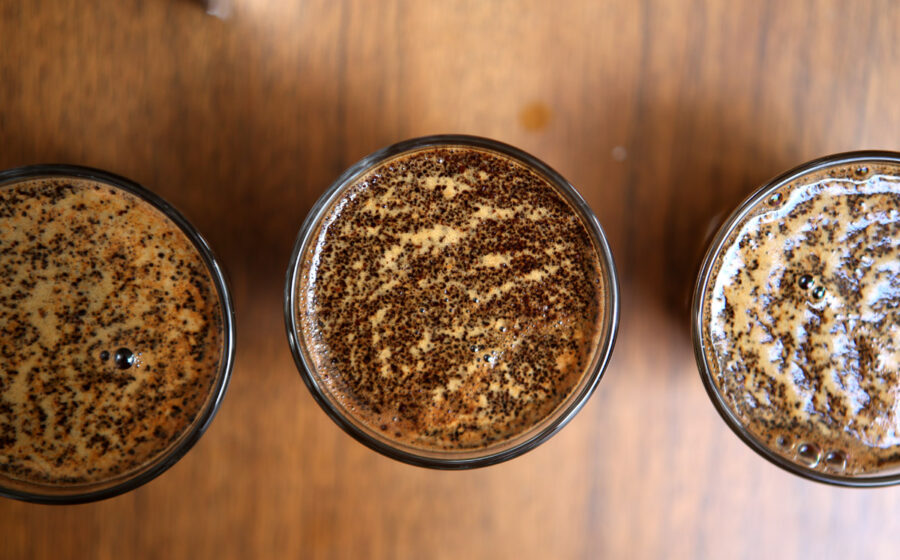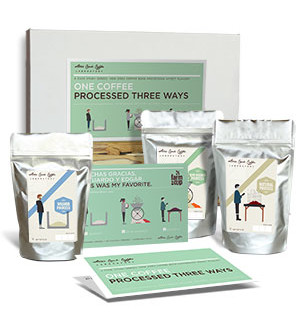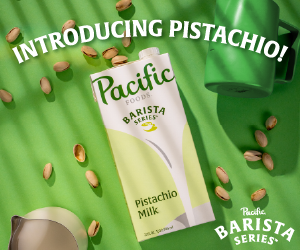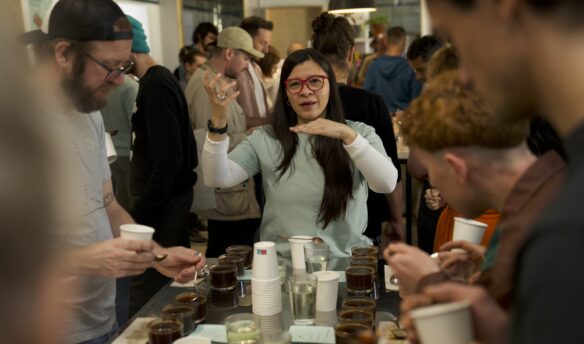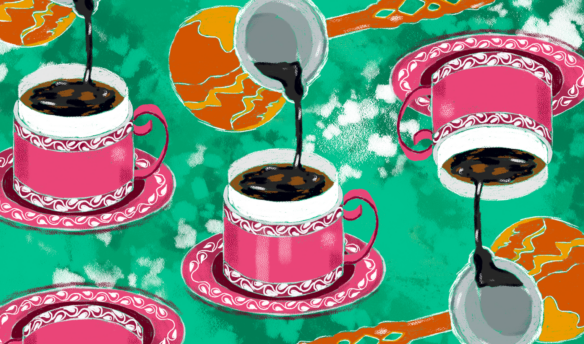[E]very roaster knows how important processing is to a cup of coffee. Critical. Second only, arguably, to origin. Among customers, only coffee über-geeks even know what processing means, never mind its effect on a cup. This is mainly a problem of isolation. It’s difficult to show which characteristic flavors come from which process when so many other variables are at play in a cup. Beyond that, it’s just one more complexity to a drink that never seems to get simpler to understand. Without a cupping lab filled with scores of coffees from dozens of countries processed in the countless variations between washed and natural, how is a coffee drinker supposed to learn what flavors derive from origin or varietal or roasting or processing?
A couple weeks ago, Stone Creek Coffee out of Milwaukee mailed Fresh Cup a box of the first of what they call the Case Study Series. The three eight-ounce bags inside all came from Finca San Sebastian in Antigua, Guatemala. Even more specifically, they all came from the same loamy soil of the farm’s Santo Domingo lot, which lies 1,500 meters above sea level. All were yellow Caturra. But one was washed, one semi-washed, and one natural. Huffing a few breaths out of each bag was the single best lesson on processing’s effect on aroma I’ve encountered.
Christian Ott, the director of coffee and green buyer at Stone Creek, visited the farm in January and saw that cherries were undergoing multiple processes. He asked if coffee from a single lot could be processed in three ways and the farmers, Estuardo Falla Castillo and Edgar Cabrera Cozza, said sure. In the cupping lab, after the coffees arrived, Ott and the rest of the team realized they had ordered a solid coffee and an even better educational opportunity.
The processes announced themselves like horns, and it was obvious which was the trumpet, which the sax, and which the clarinet.
Included with the package is a poster-sized information sheet that explains the processing and origin of the coffee on one side and a graphic of the variables that affect flavor in coffee on the other. With all of this information, most of it likely new to the customer, Ott withholds one piece of information most often found on coffee packaging: tasting notes. Ott says he didn’t want to sway the drinker’s experience or throw around phrases that might freak them out or simply confuse them.
At our office, Steve Lanphier, roaster, consultant, friend of Fresh Cup, and great guy, lead an informal cupping. Every step of it provided a clear-eyed examination of how the three processes changed the coffee. There was no wondering where that currant flavor came from in the natural, no peering through a haze of variables to decipher the subtle change from the washed to the semi-washed. The processes announced themselves like horns, and it was obvious which was the trumpet, which the sax, and which the clarinet. Even more amazing, each was playing the same tune. They were oh so apparently the same bean, raised in the same home.
Side-by-side-by-side, processing turned from a fuzzy factor to a defined characteristic.
—Cory Eldridge is Fresh Cup’s editor.



